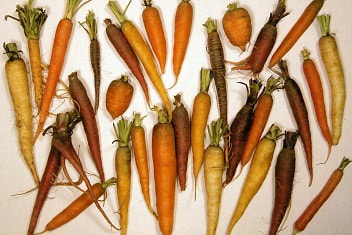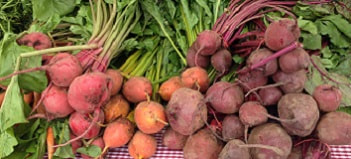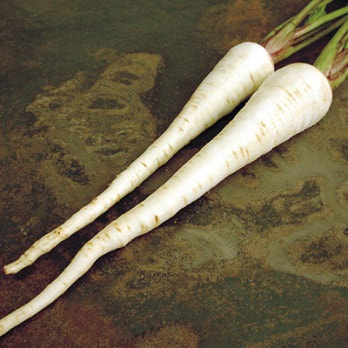|
It’s important to know your roots. In the vegetal sense that is. Not that mandarins of botany have made it simple. With a track record like theirs of the misclassification of fruits and vegetables, it’s a bit hard to understand how they’ve maintained their positions in the rise and fall of economic winds. They do, however make a few distinctions in what we generally call root vegetables, specifically between taproot and tuberous roots. What this botanical parsing provides is unclear to me, but it must be important somewhere. Accordingly, potatoes and sweet potatoes are tubers. While beets, carrots, celeriac, parsnips, turnips and rutabagas are taproots. Clarified? What is important to understand is that these vegetables grow under the earth’s surface where they store up energy which they later contribute to human health and well-being. Most of these roots are substantially long-lived and can be stored for months after their harvesting, particularly in root cellars. The ability of stretching out lifetime of a food staple is a significant plus in extreme climes. The American poet, Rothke noted in his poem, Root Cellar: “Nothing would give up life: Even the dirt kept breathing a small breath.” Many root vegetables have unique personality quirks, such as the parsnip which becomes sweeter if harvested after the first frost. The rutabaga is the result of the unlikely marriage between a turnip and a cabbage. (Exactly how did that work?) An ancestral turnip was the first Jack-o-Lantern according to one devilish Irish/Scottish tale. Certain folklore holds that carrots improve the eyesight, especially one’s night vision. This is now said to be a myth propagated by the British in WWII to mislead the enemy about British capabilities. Finally, lactating mothers who consume beets produce pink milk. Mother Nature at her whimsical best. Virtually all of these root vegetables are valued food staples as they contain high concentrations of carbohydrates. They are found in every cuisine and consequently in every kitchen. One way to look at all these buried treasures is as storage vaults that safekeep energy in the form of natural starches and sugars. Americans’ taste and demand for sugar continues to trend upward and exceeds our ability to produce enough of it within our borders. Before the advent of cane sugar, the sugar beet was the primary source of sugar. There is a reason it is still on the commodity exchanges. This entire underground group are the source of many great soups. Perhaps because they lend themselves to being pureed. Their flavors are benign as opposed to sharp and consequently blend well with lots of other foods. Soups have long provided a warm, satisfying and often an economical meal. The market is full of these glorious roots at this time of year. Almost as full as our website is of delicious root recipes such as: Mixed Roasted Roots, Maple Roasted Carrots, Golden Beet Flan, Spicy Parsnip Cake with Ginger Cream Cheese Frosting, and Roasted Beet Hummus to name a few. Plug your primary ingredient into the search box of the website and take a toodle around. You might be surprised by the options you find. Today we are offering a Creamy Turnip Soup that’s as pretty as it is terrific. It is Kay Carroll’s adaptation of a recipe from Taste of Home.
0 Comments
Leave a Reply. |





